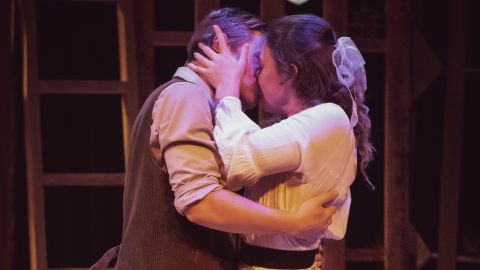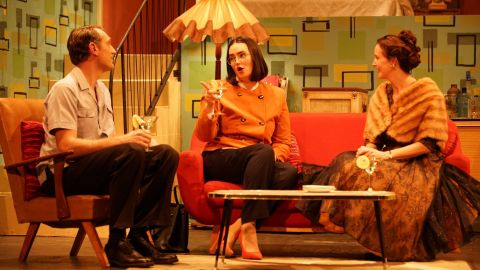Setting the Stage

Award winning Director Nina Meehan explores the process of setting the stage for a production involving young people.
When I speak to audiences of non-theatre folks, I often find myself making the distinction that theatre is a collaborative art form. The painter or poet can work solo, but the theatre maker requires a team of creative people all working towards one single storytelling mission. The director of the production holds the responsibility of keeping all of the brilliant creative minds working on the show pointing in the same direction.
So, how does a director work to ensure that the audience member is seeing one unified artistic voice, not a whole bunch of disparate viewpoints? The director must establish the “True North” of the play or musical. This is not the staging or the casting or the couch upstage right, but is the overarching, driving concept that will keep all of the collaborators working towards the same vision.

“True North” can be thought of as the central storytelling idea that the director is bringing to the script. The script and music are supplying the storyline and characters, but how you tell that particular story is the director’s decision. The director of a production has a curatorial obligation to interpret the story that the playwright has written with a lens that brings out something new and interesting for the audience.
In a pre-production process, it is this vision that unites the team and begins the task of using the creative superpowers of each individual theatre artist in their area of expertise to make sure that the final production all lives in one world. The director’s role is to be an adept and agile communicator, using many different forms of communication to bring along the entire team. Visuals, written word, spoken word, audio – whatever tools the director can find will be helpful because all of the different designers are likely different types of learners. A set designer likely is a visual storyteller and visual processor of information, where a dramaturg is more likely to connect deeply to words. The director has to be fluent in multiple languages of artistic communication.

One easy version of getting everyone to understand the “True North” of a show is a Pinterest board with images and links to audio. For instance, when I directed the premiere of the TYA version of the musical James and the Giant Peach with book by Timothy Allen McDonald and music and lyrics by Benj Pasek and Justin Paul, I used images that captured the overall feeling of the production that I wanted to present–colour, texture, era, tone – but also, specific costume silhouettes that spoke to me.
I also put in ideas that didn’t yet have a full resolution, but that I was playing with in my head. I found an image of an umbrella that inspired me to present the seagulls. As we worked together as a team, it became clear that seagulls out of umbrellas were not going to work, but we ended up using umbrellas – parasol size, midsize and patio sized as the peach itself.

The joy of the “True North” collaboration is it allows for divergent thinking, which is one of the primary strengths of the creative mind. All ideas can flow and be out there to grow. The director is not saying, “This is how it MUST be.” Instead, the director is using the concepts presented as an invitation to allow each artist to bring their own brilliant creative ideas into the production.
All of this is lovely and great, but for most of us in the theatre world, we are working with resource constraints. Maybe you are working in a black box theatre and there is no room for big set pieces or you have a limited budget and have to costume the show based only on what can be found in the storage room. These constraints are completely normal in our world. The good news is that it’s these constraints that can actually make the job of the director, and therefore the collaborators, easier!
The “True North” concept can be daunting without any limits. It would have been great in my production of James and the Giant Peach to have a full skyscraper to grow from a trap in the stage and meet a giant flying peach, but the space I was working in at that time had no trap and no fly system. These constraints led me to my “Anchor Point” for the production, or the element of the design or production element that is fixed and therefore the thing you build everything else off of.

Another example. In a recent production of the Jungle Book I was working on, the show was being performed in a theatre where set pieces were not an option. I decided to use pre-created projections from Broadway Media to bring settings to life with visual storytelling. As a result, the “Anchor Point” became those projections. The colour palette and tone were all set, but there was still a “True North” that I created that focussed on the vibrancy of the world and the jazzy style of the music. But, the hard work was done because I had settled on an “Anchor Point” early on in the process. My job as a director was actually simpler, but still artistically relevant and fulfilling.
The key to all of this is to communicate early and often. And then communicate more. The director’s voice brings the team together and while for some people it can feel intimidating to be the leadership voice in the room, particularly in a collaborative process. The more clear and defined the director is early on, the more creative room the design team will have later in the process. The director is not in charge of managing and deciding every detail, but instead, setting the table with all the tools that the designers need to cook an exquisite storytelling meal.

Nina Meehan is the Founder and former CEO of Bay Area Children’s Theatre, the largest TYA company in California. She was an invited guest speaker at the Australia Junior Theatre Festival in 2022.






